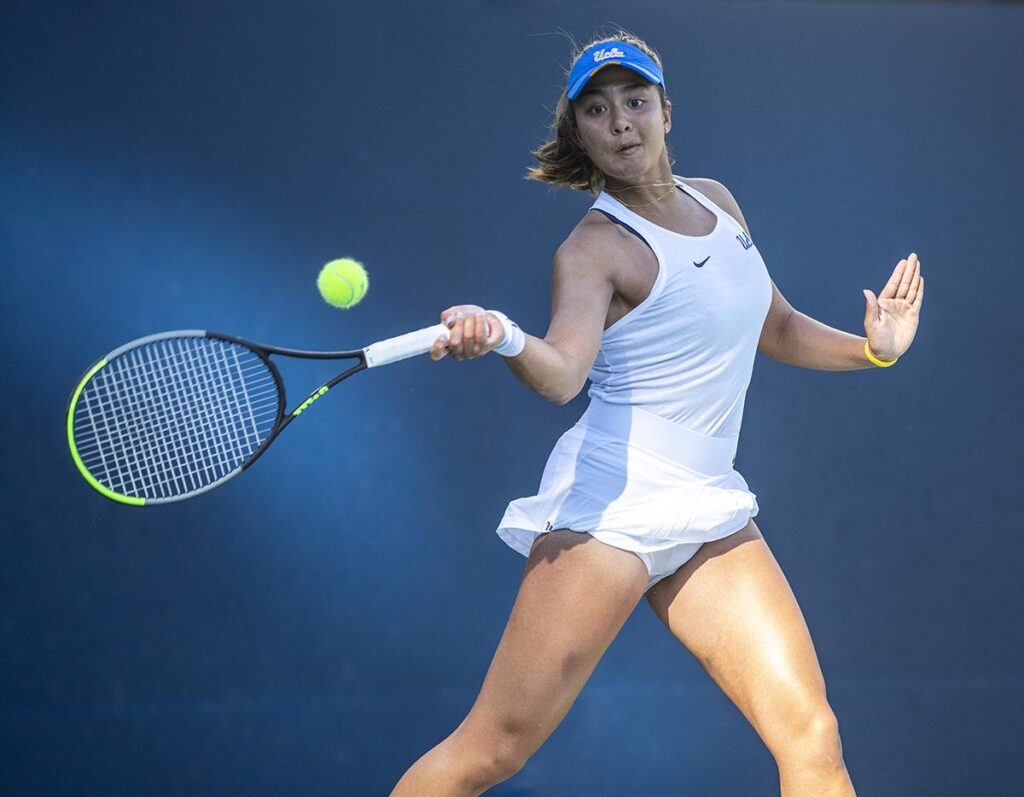WomenŌĆÖs Tennis Team ŌüŻTriumphs in NCAA championship Against Georgia
In an electrifying ŌüŻexhibition of skill and resolve,ŌüŻ the womenŌĆÖs tennis team ŌüŻclashed with the UniversityŌĆī of Georgia Ōüóduring the NCAA Championship, embodying the passion and competitive Ōüóspirit inherent in collegiate athletics. This eagerly awaited match took placeŌĆŗ on a bright, sunny court, attracting a fervent audience ŌĆŹeager to cheer ŌĆŗfor their team. ŌüóAs each player fought for dominance,every pointŌĆī raised the stakes higher,emphasizing Ōüżthe importance of ŌüŻthis event within Ōüżwomen’s ŌĆŗsports. The Battalion offers anŌĆŹ extensive gallery that captures pivotal Ōüżmoments from this thrilling contest, showcasing the talent, determination, and teamwork that are hallmarks ŌĆŹof NCAA tennis.
Strategic Offensive Approaches and Key Players in NCAA Championship Against Georgia
The championship encounter against Georgia Ōüóhighlighted a dynamic array of offensive strategies ŌĆŗthat kept fans captivated throughout. The teamŌĆī implemented a rapid-fire ŌĆŹattacking approach, strategically targeting weaknesses in Georgia’s defense. This involved assertive net play combined with swift transitions thatŌĆŹ allowed them to gain early advantages in ŌĆŹcritical sets. Notable players made significant impacts through their individual talents and alsoŌüó their ability toŌüŻ work cohesively as a unitŌĆödemonstrating an remarkable commitment to flexible gameplay ŌĆŗ as they adapted tactics based on real-time developmentsŌüŻ during the match.
Centrally featured wereŌĆŹ standout ŌĆīathletes who Ōüżnot only displayed exceptional skills but also ŌüŻprovided leadership on-court. The match showcased players such as:
- Athlete X – Renowned for her powerful serves and capacityŌüŻ to control game tempo.
- AthleteŌüó Y – A tactical mastermind who adeptly setŌĆŗ up scoring opportunities for her teammates.
- Athlete Z -ŌĆī Her agile footwork and swift reflexes transformed defensive situations into Ōüżoffensive chances.
These key contributors executed plays that ŌĆŗnot only perplexed ŌĆītheir opponents butŌĆŹ also fostered an atmosphere brimming with competitive energyŌĆödriving their team to perform at its best underŌĆŹ pressure. Each player’sŌĆŗ contribution was carefully orchestrated, revealing both depth ofŌüŻ talent and unwavering dedication present throughout this championship clash.
defensive Strategies ThatŌĆŹ Contributed to WomenŌĆÖs Tennis ŌüóVictory
TheŌüó recent face-off between the womenŌĆÖs tennis squad andŌüó Georgia at ŌüŻtheŌüŻ NCAA championship underscored howŌĆŗ vitalŌĆŹ defensive strategies wereŌüó in ŌüŻsecuring victory for ŌĆŗthe team.ŌĆī Remarkably ŌĆŹadaptable under pressure, Ōüóthese athletes executed defensive maneuvers thatŌüó kept their opponents off balance throughout ŌĆīmuch of Ōüóthe match. Key strategies included:
- Exceptional Court Coverage: Players effectively dominated baseline play whileŌüż limiting offensive chances for ŌüżGeorgia.
- Tactical Shot Placement: Precision placement forced opponents into arduousŌüż positions leading ŌĆīthem to misfire shotsŌĆöcreating openings for counter-attacks.
- Keen Anticipation:
this cohesive defensive effort was further Ōüóamplified ŌĆīby ŌĆīstrong net presence ŌĆŹwhich disrupted any rhythm established by ŌĆŹGeorgia’s players. Key individuals exhibited remarkable agility alongside seamless ŌĆŗcoordination enabling rapidŌüŻ shifts between offense and defenseŌĆöaŌĆī combination that not only ŌĆŗsecured Ōüżpoints butŌüż also bolstered confidence within their ranks.The statistics from this matchup highlighted their defensive superiority:
| Status ŌĆŹCategory | Team A (WomenŌĆÖs Tennis) | Team ŌüŻB (Georgia) |
|---|---|---|
| Aces | 6 | 3ŌĆī |
| double faults | 2 | 5ŌüŻ |
| unforced Errors | 10 < / td > | 15 < / td > |
Post-Match Reflections: Future Tournament Strategies & Team growth Insights
The recent contest between womenŌĆÖs ŌĆŗtennis against Georgia has yielded valuable insights poised to influence both teams’ preparations ahead of future tournaments.Notably,theŌüó intensity displayed emphasized mental resilience alongŌüó with adaptabilityŌĆötwo essential traits distinguishing elite competitors during high-pressure scenarios.As teams evaluate performances moving ŌüŻforward,it is imperative they prioritize developing frameworks enhancing psychological strength so athletes can sustain optimal performance levels when faced Ōüżwith challenges.Stakeholders should contemplate investing resources into support systems likeŌĆŹ sports psychologists ŌĆīaimed at ŌĆŹassisting players navigate these ŌüŻhurdles more efficiently.
Furthermore,this matchup illuminated areas needing improvement across both squadsŌĆÖ systems which could ŌĆībe ŌĆīaddressed prior upcoming competitions.Coaches may find it beneficial reviewing player analytics particularlyŌĆŹ focusing on aspects such asservice percentagesandŌĆŹ approaches at net.Tailoring training regimens centered around these elements ŌĆŗmight prove crucial.< strong>MainŌĆŹ focus areas include:
The table ŌüŻbelow Ōüżsummarizes performance metrics possibly guiding strategic decisions moving forward.
| Metrical Data | Team A | Team B |
|---|---|---|
| First Serve Percentage | 65% | 58%&nb sp; |






